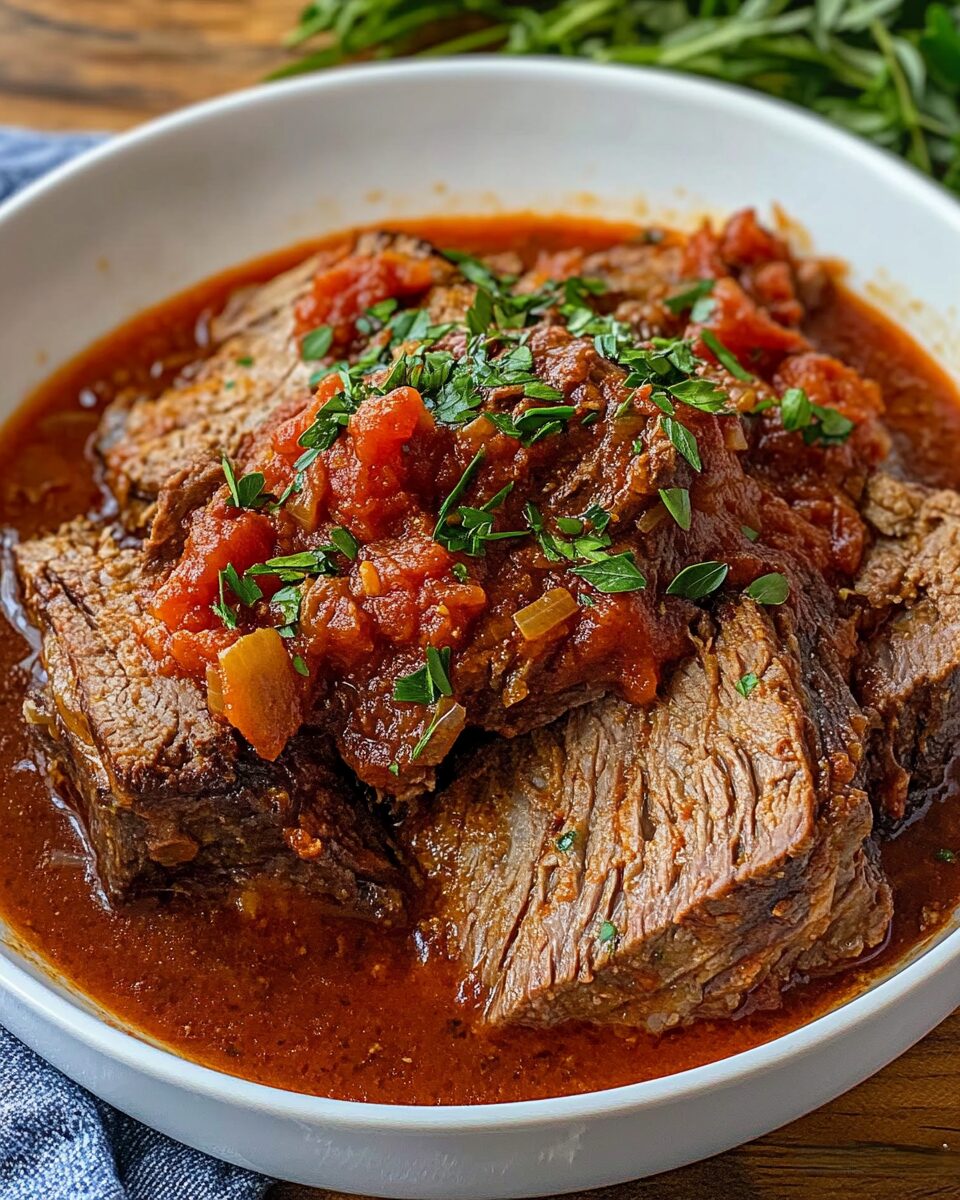Why Stracotto Is So Beloved in Italian Cuisine
Stracotto is more than just a pot roast—it’s a reflection of the Italian philosophy that great food takes time and patience. Traditionally cooked for several hours on the stovetop or in the oven, this dish builds complex layers of flavor from simple, wholesome ingredients. It’s a dish that invites gathering around the table, savoring the rich aromas that fill the kitchen as the roast slowly simmers. Rooted in the cuisine of central and northern Italy, stracotto is often served with creamy polenta, tagliatelle, or a hunk of crusty bread, ensuring every last drop of sauce is enjoyed.
A Marriage of Flavor and Technique
What makes this Italian pot roast truly exceptional is its slow braise in a tomato and red wine sauce. The wine not only deglazes the pot and lifts flavorful brown bits but also infuses the meat with a deep, slightly acidic complexity that balances the sweetness of the tomatoes. The soffritto—a base of sautéed onions, carrots, and celery—provides a savory backbone, while garlic, oregano, and basil add the familiar warmth of Italian seasoning. Tomato paste and crushed tomatoes create a robust, velvety sauce that clings to every bite of beef. Over time, the flavors meld together into a rich, cohesive whole, while the meat becomes impossibly tender.
Choosing the Right Cut of Meat
For the best results, use a well-marbled, tough cut of beef that benefits from long, slow cooking. Chuck roast and brisket are both excellent choices. These cuts are affordable, full of flavor, and break down beautifully into tender shreds after several hours of braising. The fat marbling not only enhances flavor but also keeps the meat moist during the cooking process. Trim any excess surface fat, but leave enough to baste the meat as it cooks.
Versatile Pairings for a Memorable Meal
Stracotto is a versatile centerpiece that pairs beautifully with a variety of sides:
-
Creamy Polenta: Traditional and comforting, perfect for absorbing the sauce.
-
Tagliatelle or Pappardelle: Wide ribbons of pasta catch the shredded meat and sauce beautifully.
-
Mashed Potatoes: A cozy, familiar pairing that works wonderfully with braised meats.
-
Crusty Bread: Essential for mopping up the rich tomato and wine sauce.
-
Soft Gnocchi or Risotto: For a luxurious, indulgent twist.
Add a side of garlic sautéed greens, roasted vegetables, or a crisp arugula salad with lemon vinaigrette to balance the richness.
Tips for the Best Stracotto
-
Brown the meat well. Don’t skip this step—it creates depth and enhances the umami flavor.
-
Deglaze thoroughly. Scraping up the browned bits after adding the wine adds a richness that makes the sauce unforgettable.
-
Use good-quality wine. A dry red wine you’d enjoy drinking (like Chianti, Sangiovese, or Merlot) will enhance the dish significantly.
-
Cook low and slow. Resist the urge to raise the oven temperature. Gentle heat is key to achieving tender, flavorful meat.
-
Let it rest. After shredding or slicing, let the meat sit in the sauce for 10–15 minutes before serving—it allows the flavors to meld further.
Make-Ahead and Storage Tips
Stracotto is an ideal make-ahead dish—perfect for stress-free entertaining or weekly meal prep.
-
Refrigerate: Store leftovers in an airtight container with sauce for up to 4 days.
-
Freeze: Freeze shredded meat and sauce in portioned containers for up to 3 months.
-
Reheat: Gently reheat on the stovetop or in a 325°F oven until warmed through. Add a splash of broth or wine if needed to loosen the sauce.
-
Next-day flavor boost: The sauce continues to develop overnight, so leftovers may taste even better than the day you made it.
Nutritional Balance and Dietary Tips
Each serving of stracotto is packed with protein (~35g), moderate fat (~25g), and minimal carbohydrates (~10g), making it naturally gluten-free and low in carbs. You can make it lighter by:
-
Skimming excess fat from the sauce after chilling.
-
Serving with vegetables or cauliflower mash instead of pasta or potatoes.
-
Using leaner cuts of beef, though you may sacrifice some tenderness.
To make the dish dairy-free, omit the Parmesan garnish, or use a dairy-free hard cheese alternative.
Flavor Variations and Additions
This Italian pot roast is flexible and can be adapted to suit your pantry and preferences:
-
Add mushrooms to the sautéed vegetables for extra umami.
-
Toss in olives or capers near the end for a briny twist.
-
Include crushed fennel seeds or a cinnamon stick for subtle depth and aromatic complexity.
-
Finish with balsamic vinegar for a touch of brightness and sweetness.
-
Add cream or butter at the end for a silkier sauce (though this veers toward northern Italian styles).
Conclusion
This Italian Pot Roast (Stracotto) is a testament to the beauty of slow cooking—transforming humble ingredients into a rich, elegant, and comforting masterpiece. With fork-tender beef enveloped in a luscious tomato and wine sauce, this dish is made for gatherings, lazy Sundays, or whenever you crave the kind of meal that feeds both body and soul. Pair it with pasta, polenta, or crusty bread, and you have a timeless, nourishing dish that’s as impressive as it is approachable. Stracotto proves that sometimes, the best dishes are those that take their time.

